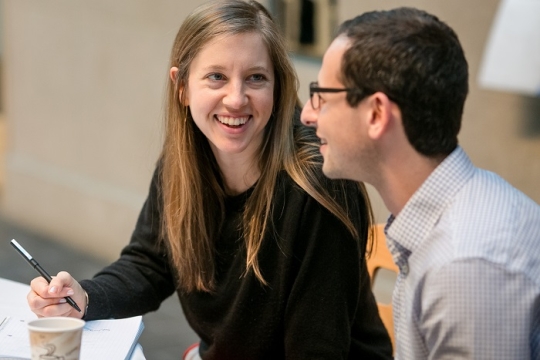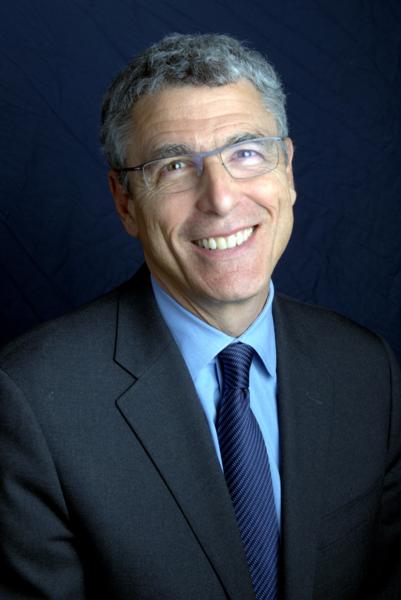
February is a month of fostering leadership at the Union for Reform Judaism. It’s something we do here all the time, of course, but this month, especially, with the Scheidt Seminar and NFTY Convention, we shine a spotlight on the extraordinary role that individuals of all ages play in strengthening our sacred community.
This month of leadership reminds me of a saying from the Babylonian Talmud that offers us two important and interwoven lessons: 1) The character of a generation is determined by its leader, and 2) The character of a leader is determined by the generation.
Are both correct? For sure.
The symbiotic relationship of individuals to their community and of leaders to their group, is at the heart of our own philosophy of community-building at the URJ.
The notion of leadership offered by Professors Ronald Heifetz and Marty Linsky intrigues me. As these adaptive leadership experts write:
“Leadership is an improvisational art. You may be guided by an overarching vision, clear values, and a strategic plan, but what you actually do from moment to moment cannot be scripted. You must respond as events unfold. To use our metaphor, you have to move back and forth from the balcony to the dance floor, over and over again throughout the days, weeks, months, and years.”
This idea speaks to me, not only because I was trained as a modern dancer, but also because the notion of living in the moment – as a leader, responding to the world and listening to the voices of those around me – invigorates me, offering an exhilarating way to teach and learn.
Indeed, the best teachers are those who learn alongside their students. In all our endeavors, the URJ embraces perspectives of multiple generations, helping us look at the world through lenses that offer multi-faceted views.
We can use these lenses to look at our structures, to make certain an appropriate variety of voices is present. They help us ensure our leaders promote growth opportunities, partnerships, and outreach, so our congregations cultivate every single individual who can contribute to creating a warm, welcoming community that nurtures and strengthens our Jewish future.
In fact, our lenses make it fun to include others in our work, to start new conversations, and to search out and identify new leaders. As my teacher Marty Linsky points out, adults “tend to lose that playful, adventuresome, creative generativity by which they can ask themselves: ‘What’s worth doing today?’”
Indeed, it’s good to challenge and check ourselves – and our leadership lenses can help us do these things, too. If you haven’t experienced the wisdom present among your congregation’s NFTY youth or listened carefully to new members who are joining your community, take time to stop, listen, invite, and engage.
In a now-famous 1974 essay, “Tzimtzum: A Mystic Model for Contemporary Leadership,” published in Sh’ma magazine, one of my beloved teachers at Hebrew Union College-Jewish Institute of Religion (HUC-JIR), Rabbi Eugene Borowitz, z”l, argued that rabbis and all leaders must understand “that people are always as important, if not more important, than the current undertaking.” Building on the Lurianic Kabbalistic creation myth, tzimtzum is the act of contracting to make space. In leadership settings, tzimtzum happens when leaders deliberately do not take up all the space available, thus making room for others to lead.
As we observe Rabbi Borowitz’s third yahrzeit, I recall the way our rather intimidating teacher powerfully demonstrated tzimtzum in our seminar discussions, letting us take the lead, listening quietly until an opportune moment allowed him to interject his perspectives. Our wise mentor understood that we would never find our own voices to lead if those already in leadership posts failed to hold back so we could find and fill those roles, even if only briefly.
As I spend time later this month with NFTY youth and new congregational presidents, I know I will learn from them and from the true power of our Reform community, expressed through the commitment of members and leaders of all ages.
I recently learned a wonderful Torah interpretation from a young rabbinic colleague, Rabbi Matt Green, from Congregation Beth Elohim in Brooklyn, NY, who also spearheads an impressive millennial Jewish community, Brooklyn Jews. Matt, an exceptionally innovative leader, shared a powerful insight from Parashat Mishpatim: After Moses offers a long list of mishpatim or instructions, he “took young people among the Israelites, and they made burnt offerings” (Exodus 24:5).
As Matt explained, quoting Ibn Ezra (1089-1164), Moses takes young people to ratify the covenant because the older generation was too tired from climbing the mountain to make the offering themselves. By making room for the younger Israelites, Moses practices tzimtzum, not only because the older leaders might be tired, but also because the people needed fresh insights and commitments from the next generation. How fitting that I learned this Torah from a wise, young colleague.
Our Jewish future will be made possible by skilled and wise Jewish leaders. Some of them lead our congregations, some our teens, and some our wider world. May we never stop appreciating, nurturing, and making space for leaders to step up and lead.
Have something to say about this post? Join the conversation in The Tent, the social network for congregational leaders of the Reform Movement. You can also tweet us or tell us how you feel on Facebook.
Related Posts

Setting Your Leaders Up For Success

Civil Discourse – How to Facilitate Productive Conversations about Hard Topics

